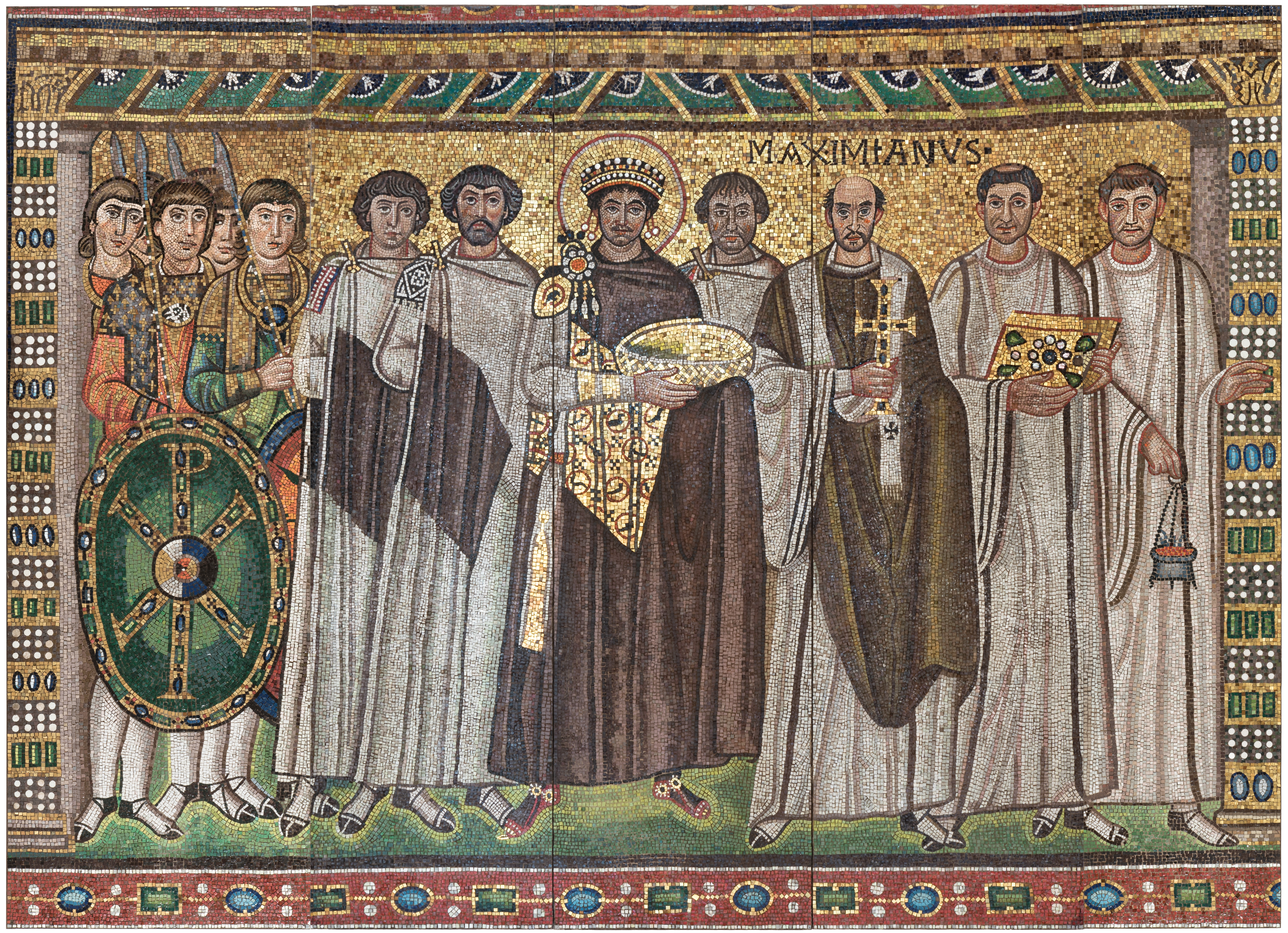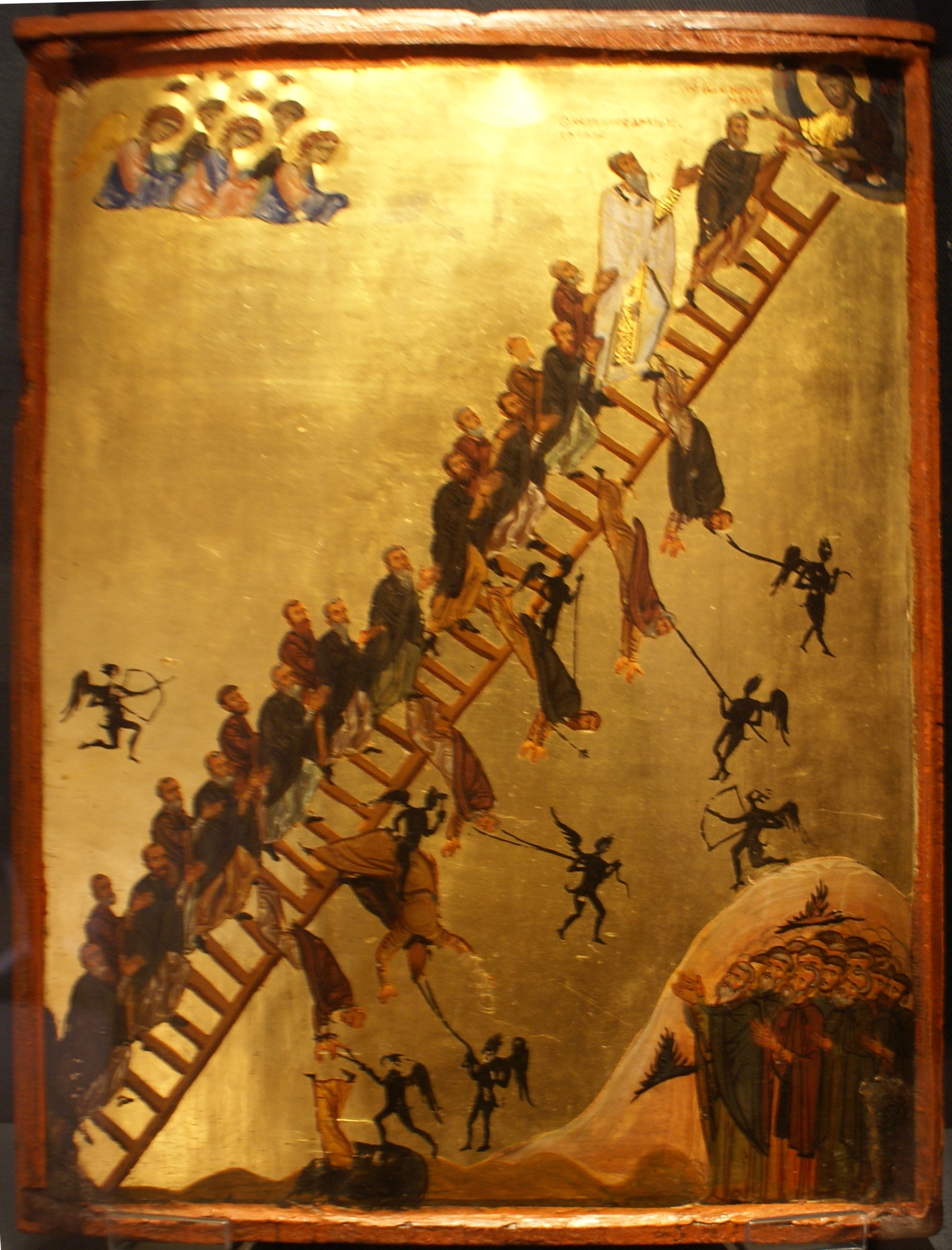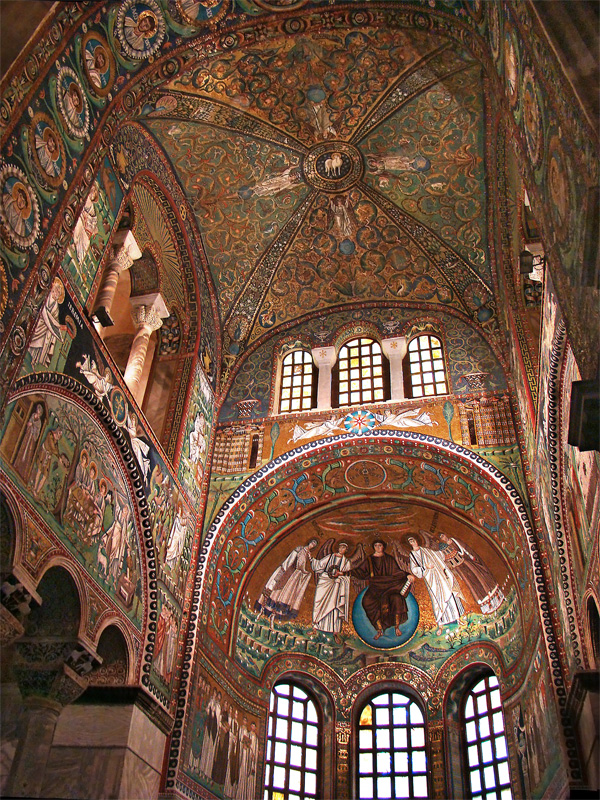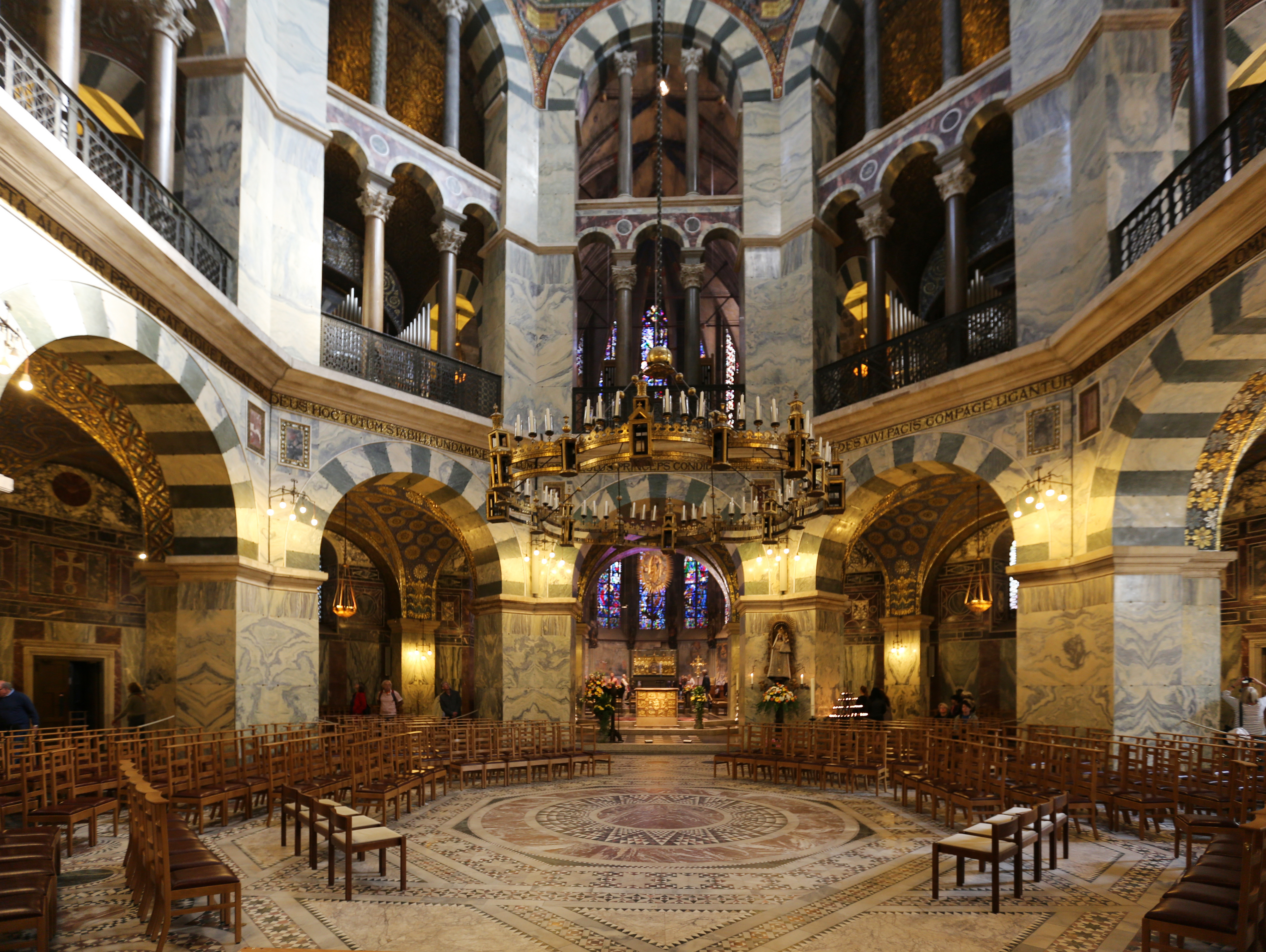1. THE FALL OF THE ROMAN EMPIRE.
The Germanic invasions of the 5th century destroyed the Western Roman Empire.The fall of Rome, in 476 A. D. marks the beginning of the Middle Ages.
1. 1. The end of the Western Roman Empire.
In the early 5th century, a nomadic people from Asia, invaded Europe, led by their ruler Atila.The Germanic peoples fled from the huns to the Western Roman Empire, invading it and creating various rival German Kingdoms:
- The Ostrogoths (in spanish, ostrogodos): Italy and Dalmacia.
- The Visigoths (in spanish, visigodos): south of Gaul and Hispania.
- The Franks (in spanish, francos): Gaul
- The Burgundians (in spanish, burgundios): eastern Gaul.
- The Alemmani (in spanish, alamanes): the Rhine.
- The Angles and Saxons (in spanish, Anglos y Sajones): Britannia.
1. 2. The germanic kingdoms.
The germanic peoples had no a writting language, laws or states. They were organised in tribes, led by a warrior-king, elected by the chiefs of the tribes.Because of this, when they occupied a territory they became the ruling class but adopted Roman customs. Latin was the official language, Christianity the official reliigion and the kings had Roman counsellors and used Roman money.
1. 3. Breakup of the Mediterrenan unity.
By the 8th century, the Mediterranen was divided in three different cultural and religious areas:- The Western Roman Empire controlled by the Germanic Kingdoms. Official language: latin; official religion:western christian church.
- The Eastern Roman Empire became hellenised and adopted the Greek language and eastern political practices.
- In the 7th century, the followers of Islamc conquered many territories formely governed by Rome.
| Empire of Attila the Hun. |
 |
| Fall ot the Western Roman Empire. File:Invasions_of_the_Roman_Empire_1.png https://commons.wikimedia.org/wiki/User:MapMaster License: (CC BY-SA 2.5) |
_white.jpg) |
| Aureus of Theodoric the Great. The germanic kingdoms continued to use the roman coins. |
2. THE VISIGOTH KINGDOM.
The visigoths were a germanic tribe that became
mercenaries in the service of Rome and settled in Dacia in the 4th century.
- In 409 AD several germanic peoples: the suebis (in spanish suevos), vandals (in spanish, vandalos) and alans invaded the Iberian Peninsula and the visigoths came to the Peninsula as allies of Rome. They expeled the vandals and alans to Nort Africa.
- By the middle of the 5th century they formed a kingdom in southern Gaul, the kingdom of Tolosa.
- In 507 A. D., they were defeated by the franks (Battle of Voullie) and lost the south of Gaul. After that they organised a kingdom in the Iberian Peninsula with capital in Toledo (554 AD) that surived 200 years.
2. 2. Political organisation of the visigotich kingdom.
The Visigoths were a small minority (150.000 of a population of six million), but hold most of the land and were the privileged social group.
The visigothic kingdom was based on:
The visigothic kingdom was based on:
• An
elected monarchy but supported by institutions such as:
- Aula Regia, an advisory body of nobles and clergy.
- Councils of Toledo, religious and civil assemblies were laws were made.
• Control
of the entire Peninsula:
- Conquered the Suebi kingdom.
- Conquered the byzantine southern Spain.
- Stopped the franks in the north.
• Legal
and religious unification of the Visigoths and Hispano-Romans:
- Repealing the banning of mixed marriages.
- Conversion of Recared (in spanish Recaredo) to Catholicism.
- The Liber Iudicorum (654), a single law for the kingdom.
3. VALERIO BECOMES A PEASANT.
3. 1. Decline of the cities.
By the 5th century cities in Western Europe declined and started to loss population, because of three factors:- the attacks of the Germanic tribes
- the reduction of the trade
- the lack of jobs.
Many people decided to leave the cities and live in the
countryside, working a plot of land in order to obtain food to eat.
3. 2. Apparition of servitude.
Only wealthy lawowners had armies and fortress to protect themselves, because of that many peasants agree to become serfs .A serf was a peasant that work the lands of a lord in exchange for protection.3. 3. Ruralisation.
The peasants that fled the cities formed villages surrounded by palisades. They worked the land and kept domestic animals. They produce almost every they needed, becoming self-sufficient.4. VISIGOTHIC ART AND CULTURE.
In the visigoth kingom took place a cultural fusión between
the Hispano-Romans and the Visigoths.
4. 1. The importance of the Church.
- The clergy was very important because they knew how to write and read:
- Became the greatest conservers of Roman Culture
- Worked as a advisers to the monarchs.
- The Visigoths were Arians (in spanish, arrianos), they believed that Jesus was not the Son of God but was human, but they converted to Christianity in the 6th century.
- In Toledo were held councils (in spanish, concilios), assemblies of bishops called by the king in which civil and religious issues were discussed. Council resolutions were passed by the king and became laws.
4. 2. The scholarly language: latin.
Latin was the language of the written language of the
Visigothic Kingdom and many works of Greco-Latin antiquity were copied in
Christian monasteries.
4. 3. Art.
Characteristics:
The main characteristics were:- The fusión of Roman tradition with Germanic influences.
- The importance of religious art.
Architecture
- Small churches with stone walls and very few windows.
- Use of materials from Roman buildings.
- Use of basilica floor plan an corinthian capitals.
- Use of horsehoe archs (in spanish, arcos de herradura).
Metalwork.
Metalwork was the most important artistic expresion:- Precious metals (gold and silver), bronze and iron.
- Use of varios techniques: casting, engraving, gilding, inlays.
- Use of irregular pearls.
| Facade of San Juan de Baños with a horseshoe arch. The horseshoe arch was typical of the visigoth architecture. File:SAN_JUAN_DE_BAÑOS_1.JPG License: GFLD. |
| Recesvinto's crown. Archaeological Museum of Madrid. |
_01b.jpg) |
| Votive cross, Guarrazar's treasure. An example of a jewel with inlays. |
_01c.jpg) |
| Bronze visigoth brooch. Fichier:Fíbulas_aquiliformes_de_Alovera_(M.A.N._1975-49-130-53589)_01c.jpg Attribution: Larry Wentzel CC BY-2.0) |
5. THE BYZANTINE EMPIRE.
After the fall of Rome, the Eastern Roman Empire survived and became the Byzantine Empire.Its capital city was Constantinople, founded in 330 A.D. by the emperor Constantine on the Bosphorus Strait. Was surrounded by walls and had about 500.000 inhabitants.
5. 1. The age of Justinian (527-565 AD)
The most important ruler of the Byzantine Empire was Justinian (in spanish, Justiniano) who wanted to restore the Roman Empire.- Justinian recovered some provinces of the Western Roman Empire: the Dalmatian Coast, Italy, the Balearic Islands
- Justinian compiled a collection of Roman laws, the Justinian Code.
5. 2. The easternisation of the Empire.
- 7th and 8th centuries:
- The Empire lost a large part of its territories.
- Greek became the official language of the Empire.
- 9th and 10th centuries (the second Golden age of Byzantium):
- The empire recovered a part of its territory and the economy recovered.
- The emperor (basileus) was considered the head of Christianity
- The Western (Catholicism) and Eastern (Orthodox) Churchs broke up, due to the differences between religious ceremonies and the rejection of the autorithy of the Pope. (1.054 AD)
- The Orthodox Christianity and Byzantine culture spreaded among the Slavs (Bulgarian, Serbs, Russians), using the Cyrillic alphabet inventd by two monks Cyril and Methodius.
5. 3. The decline of Byzantium.
From the 11th century, Byzantium started to fall apart as a result of:- economic decline.
- attacks of the Turks.
5. 4. Byzantine art.
Byzantine art was a mixture of Greco-Roman and eastern art.- Architecture:
- Use of classical features (columns, archsm domes) and materials (brick, stone, marble).
- Use of richly-coloured materials to decorate the walls.
- The most important byzantine momument is the cathedral of Hagia Sophia.
- Painting: Icons, religious images painted on wooden panels and brightly colored.
 |
| The Byzantine Empire under Justinian. File:The_Byzantine_State_under_Justinian_I-es.svg Author: https://commons.wikimedia.org/wiki/User:Neuceu Lincese: (CC BY-SA 3.0) |
 |
| The Byzantine Empire in the middle 9th century. File:Byzantine_Empire_842_AD.png Author: Author: https://commons.wikimedia.org/wiki/User:Neuceu Lincese: (CC BY-SA 3.0) |
 |
| The Byzantine Empire in 1025 AD. File: https://upload.wikimedia.org/wikipedia/commons/0/0b/Byzantine_Empire_1025_AD.png Author: Ichthyovenator License: (CC BY-SA 4.0) |
 |
| A Byzantine ship using the greek fire. The greek fire was the secret weapon of the Byzantine army. It was a mixture of flammable substances that could be use in flamethrowers or hand grenades. |
 |
| A mosaic of Justinian in San Vitale of Ravenna. Byzantines used mosaics of vivid colours to decorate the walls of their buildings. |
 |
| Mosaic of the Empress Irene wih the Virgin and the Child. https://pixabay.com/es/photos/iglesia-im%C3%A1genes-fe-2707911/ https://pixabay.com/es/users/engin_akyurt-3656355/ |
 |
| The ladder of Divine ascent, an example of a byzantine icon. Icons are religious images painted over a wodden panel in vivid colours and usually with a golden background. |
 |
| Vladimir's Virgin, a russian icon of the 13th century made following a byzantine model. |
A brief story of the Byzantine Empire.
Anna Kommeno
Hagia Sophia, the masterwork of the Early Middle Ages.
A 3d reconstruction of ancient Constantinople.
San Vitale of Ravenna.
Inside Hagia Sophia. The Hagia Sophia's dome was the first of the world on pendentives and was the largest in the world until the construction of Saint Peter's in the 16th century.
Hagia Sophia, Smarthistory.
One of the reasons of the survival of the Byzantine Empire was a secret weapon: the greek fire. The greek fire was a mixture of flammabe materials that could be launched using a primitive flamethrower or hand grenades.
The origin of Russia is closely linked to the Byzantine Empire. The Kievan Rus, the first russian state adopted the Orthodox Christianity and the Cyrillic alphabet, developed from the Greek alphabet.
6. THE CAROLINGIAN EMPIRE.
6. 1. The Frankish kingdom.
The frankish kingdom included modern-day France, and
territories in Italy, Switzerland, Germany, Belgium and Holland.
- In the early 7th century, a frankish noblemen, Charles Martel (in spanish, Carlos Martel) defeated the muslims in Poitier (732).
- His son, Pipin the Younger, became King of the franks and founded the Carolingian monarchy.
- His sucesor, Charles the Great (Charlemagne) conquered most of Western Roman Empire.
6. 2. Charlemagne.
Charlemagne was important because he:- Conquered a large part of Western Europe: securing the borders of the empire.
- Strengthened the union between political and religious power:
- Force everyone to convert to Christianity.
- Force the bishops to declare their loyalty to him.
- He was crowned emperor by Pope Leo III in 800 A. D.
6. 3. The carolingian renaissance.
Charlemagne began a cultural revival: the Carolingian Renaissance.- He established schools.
- He reintroduced the teaching of Latin.
- Monks copied the works of Greco-Latin writers.
 |
| Signature of Charlemagne. Charlemagne did not learn to write and read until old age and his handwriting was poor during all his life. |
The fall of Constantinople (1453).
7. HOW DID CHARLEMAGNE GOVERN HIS EMPIRE?
Charlemagne created a new way to governing his empire because:7. 1. Organisisg the empire.
In order to govern his empire, Charlemagne gave land to the nobles in order to administer it on his behalf:- The empire was divided into 250 counties (in spanish, condados), led by a count (in panish, conde), a landowner appointed by the emperor who collected taxes and recruited soldiers.
- The border areas, marcas, were led by a military commnader, a marquis (in spanish, marqués).
- A corps of loyal commissioners, missi dominici, was established to enforce laws and control the counts and the marquis.
- These posts were not inherited and the emperor could remove a noble from office.
- The nobles (counts and marquis) and the clergy had to meet with Charlemagne in court once a year.
7. 2. Personal loyalty.
The system of goverment of the carolingian empire was based in a chain of personal relationships based on two principles:- loyalty: the nobles became the vassals and swore loyalty to the emperor, promisin respect and military aid.
- protection: the emperor granted them lands and the right to govern them.
7. 3. The birth of feudalism.
After the death of Charlemagne, this system of goverment changed because of two factors:- Division of the empire. After the death of Charlemagne's son, Louis the Pious, there were a civil war between his sons. Finally, they signed the Teatry of Verdun (843 AD), dividing the empire in three parts:
- Charles the Bald received the kingdom of Western France.
- Lothar, the kingdom of Middle France and the title of emperor.
- Louis the German the kingdom of Eastern France.
- The 9th century invasions (vikings, magyars, saracens, etc.) caused terror and insecurity among the population and only the local lords could protect them because there was not a central power.
 |
| Map of theTeatry of Verdun. File:Treaty_of_Verdun_-es.svg User:Trasamundo License: CC BY-SA 3.0 |
Most of the time, the vikings attacked in small groups, but due the division of the empire and the internal conflicts, the european kingdoms, including the former territories of the carolingian empire, could not stop their attacks against the coastal cities.
8. THE EMERGENCE OF ISLAM.
8. 1. Preislamic Arabia.
6th century:
the arabian peninsula is predominantly desert. Its inhabitants were:
- nomadic herders (bedouins).
- farmers who lived in oasis.
- group of nomads (caravans) that used camels to transports goods from the East towards the Mediterranean.
Mecca, the
birthplace of Muhammad was important because was:
- a large city and a crossroads for caravans.
- a pilmigrate center for the polyteistic inhabitants of Arabia due to the Kabba a black stone located in a temple.
8. 2. Muhammad, the prophet.
Muhammad Ibn
Abdullah was born in 570 AD. He was raised by his uncle and became a merchant,
coming in contact with Christians and Jews and later married a rich widow.
Muhammad
went to meditate in a cave on Mount Hira. There according to the Koran, the
angle Gabriel announced him that he was the now prophet chosen by Allah (God).
Muhammad was
persecuted because of his ideas and 622 fled to the city of Medina, the Hjira
(flight in Arabic).The
inhabitants of Medina converted to Islam and with their help Muhammad conquered
Mecca in 630.
By 632, the
date of the death of Muhammad, most of the Arabs were muslims and the Arabian
Peninsula was unified.
CHRONOLOGY:
330 AD Constantinople founded by Constantine.
476 AD Fall of the Western Roman Empire.
509 AD Battle of Voullie. Apparition of the Visigothic Kingdom of Toledo.
527-565 Reign of Justinian I.
570 AD Birth of Muhammad.
622 AD. Hjira. Start of the Muslim calendar.
732 AD. Battle of Poitiers. End of islamic expansion.
768-814 AD. Reing of Charlemagne.
800 AD. Coronation of Charlemagne as emperor.
843 AD. Teatry of Verdun. Division of the Carolingian Empire.
8. 3. What is Islam?
The Koran is
the holy book for Muslims:
- it is made up of 114 chapters called surahs.
- it contains the islamic creed and the religious obligations.
- dictates a code of behaviour: allows polygamy, prohibits eating pork and gambling and the duty of spread the islamic faith.
8. 3. 1.The pillars
of Islam.
There are
five basic, mandatory acts of Islam:
- A declaration of fatih: "There is no god but Allah and Muhammad is his prophet.".
- Praying five times between sunrise and sunset, facing Mecca.
- Giving to charity to show your gratitude to Allah.
- Fasting during the month of Ramadán.
- Pilgrimate to Mecca once in your life.
Worship: a
mosque.
The mosque
is the muslim place of worship. Its main parts are:
- the quibla, a wall facing Mecca.
- the mihrab, a niche in the quibla wall.
- the mimbar, a pulpit where the imam delivers sermons.
- prayer hall, a hall divided into naves that faces the quibla.
- minarete, tower used for the call to prayer.
- fountain: used to perfom ablutions before prayer.
CHRONOLOGY:
330 AD Constantinople founded by Constantine.
476 AD Fall of the Western Roman Empire.
509 AD Battle of Voullie. Apparition of the Visigothic Kingdom of Toledo.
527-565 Reign of Justinian I.
570 AD Birth of Muhammad.
622 AD. Hjira. Start of the Muslim calendar.
732 AD. Battle of Poitiers. End of islamic expansion.
768-814 AD. Reing of Charlemagne.
800 AD. Coronation of Charlemagne as emperor.
843 AD. Teatry of Verdun. Division of the Carolingian Empire.




.jpg)






No hay comentarios:
Publicar un comentario